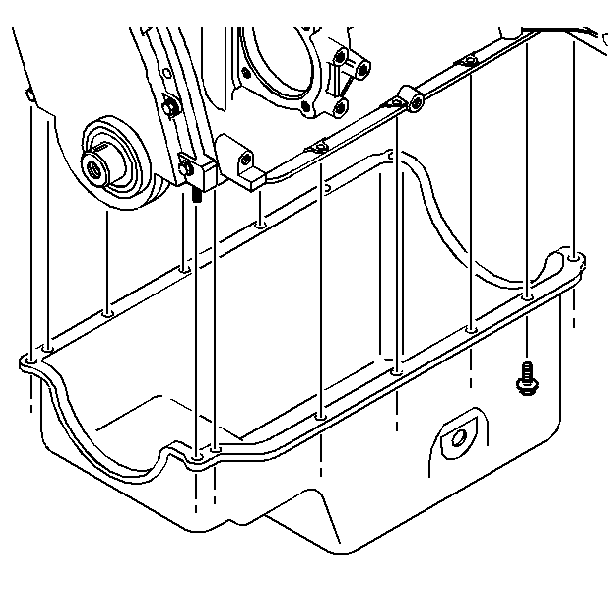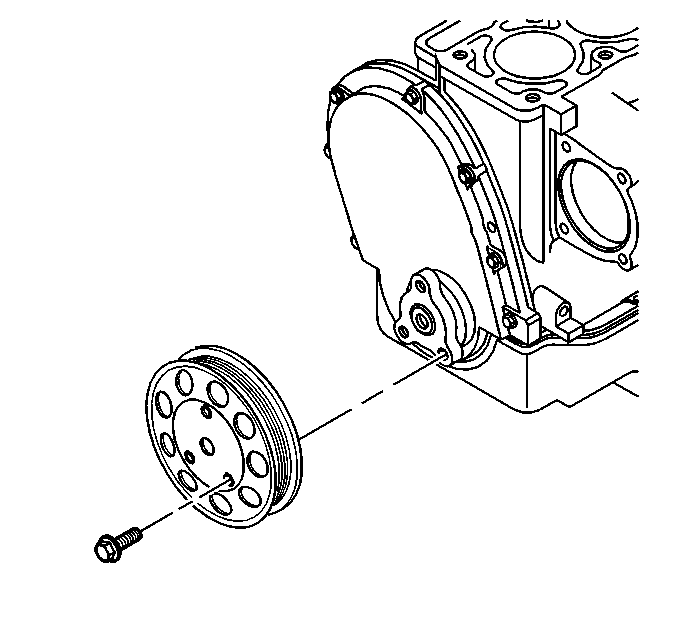Removal Procedure
- Disconnect the negative battery cable. Refer to
Caution: Unless directed otherwise, the ignition and start switch must be in the OFF or LOCK position, and all electrical loads must be OFF before servicing any electrical component. Disconnect the negative battery cable to prevent an electrical spark should a tool or equipment come in contact with an exposed electrical terminal. Failure to follow these precautions may result in personal injury and/or damage to the vehicle or its components.
. - Remove the air cleaner assembly.
- Remove the radiator cooling fan shroud.
- Remove the accessory drive belt. Refer to Drive Belt Replacement .
- Remove the engine cooling fan pulley.
- Raise the vehicle.
- Remove the crankshaft pulley. Refer to Crankshaft Balancer and Hub Replacement .
- Remove the accessory drive belt tensioner. Refer to Drive Belt Tensioner Replacement .
- Loosen the bolts for the oil pan.
- Remove the engine front cover.

Allow the oil pan to drop enough to allow engine front cover removal.
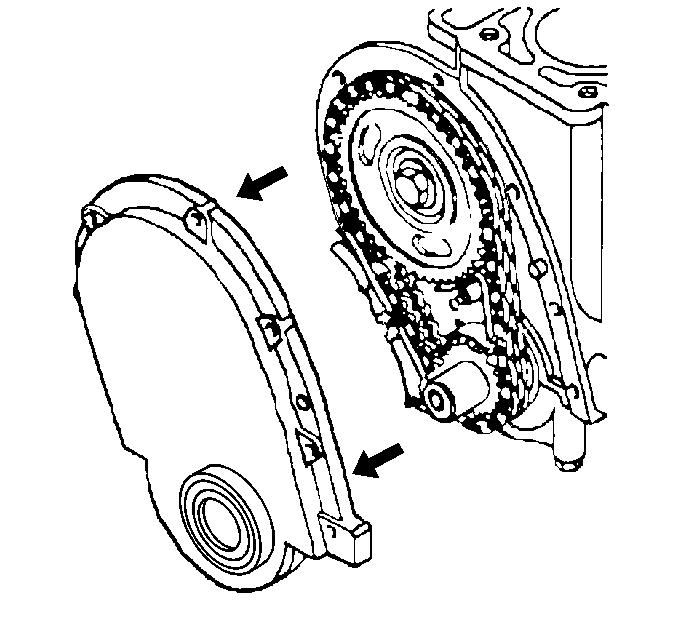
Important: Inspect the engine front engine cover for warpage or damage. Replace if needed.
Clean all sealing surfaces.Installation Procedure
Tools Required
J 35468 Oil Seal Installer.
- Install the crankshaft front oil seal.
- Apply a 10 mm (3/8 in) wide, by 5 mm (3/16 in) thick bead of RTV to the oil pan. Apply the RTV where the oil pan and the engine front cover meet.
- Apply a 6 mm (¼ in) wide, by 3 mm (1/8 in) thick bead of RTV to the engine front cover. Apply the RTV where the engine front cover and the engine block meet.
- Install the engine front cover to the engine block. The J 35468 .
- Install the engine front cover bolts.
- Remove the J 35468 .
- Remove the engine oil pan. Refer to Oil Pan Replacement .
- Install the crankshaft balancer hub and the crankshaft pulley. Refer to Crankshaft Balancer and Hub Replacement .
- Install the engine accessory drive belt tensioner. Refer to Drive Belt Tensioner Replacement .
- Lower the vehicle.
- Install the engine cooling fan pulley.
- Install the accessory drive belt.
- Install the radiator shroud.
- Install the air cleaner assembly.
- Connect the negative battery cable. Refer to
Caution: Unless directed otherwise, the ignition and start switch must be in the OFF or LOCK position, and all electrical loads must be OFF before servicing any electrical component. Disconnect the negative battery cable to prevent an electrical spark should a tool or equipment come in contact with an exposed electrical terminal. Failure to follow these precautions may result in personal injury and/or damage to the vehicle or its components.
in General Information.
Notice: The correct tool must be used in order to align the engine front cover. This will ensure that the engine front cover seal will be centered around the crankshaft. The seal must be centered around the crankshaft in order to prevent damage during hub installation.
| 1.1. | Lubricate the seal lips with engine oil. |
| 1.2. | Use the J 35468 . |
For more information about RTV sealer, refer to Sealers Adhesives And Lubricants.

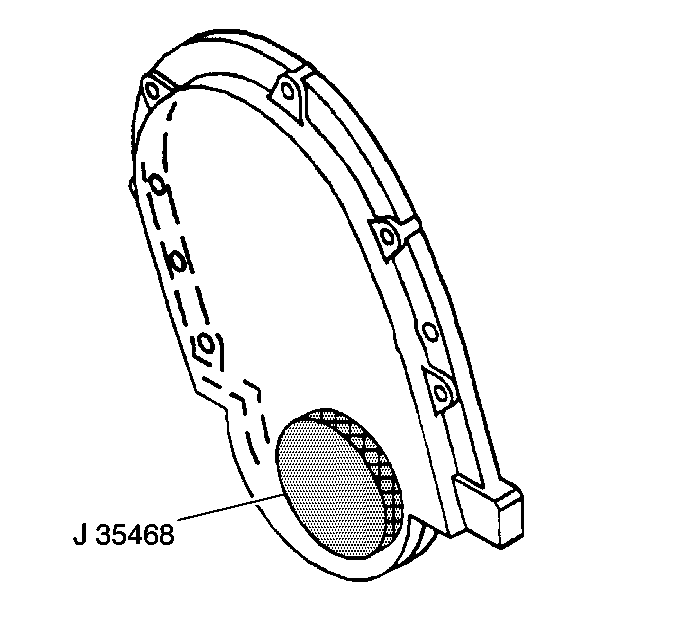
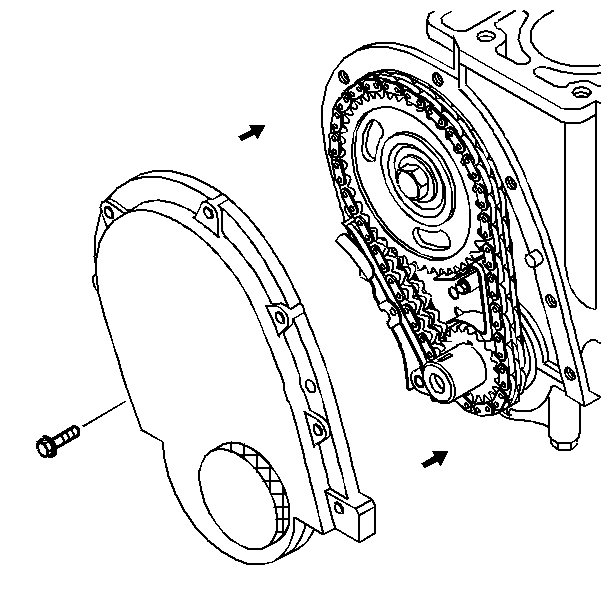
Tighten
Tighten the engine front cover bolts to 10 N·m (89 lb in).
Notice: Use the correct fastener in the correct location. Replacement fasteners must be the correct part number for that application. Fasteners requiring replacement or fasteners requiring the use of thread locking compound or sealant are identified in the service procedure. Do not use paints, lubricants, or corrosion inhibitors on fasteners or fastener joint surfaces unless specified. These coatings affect fastener torque and joint clamping force and may damage the fastener. Use the correct tightening sequence and specifications when installing fasteners in order to avoid damage to parts and systems.
